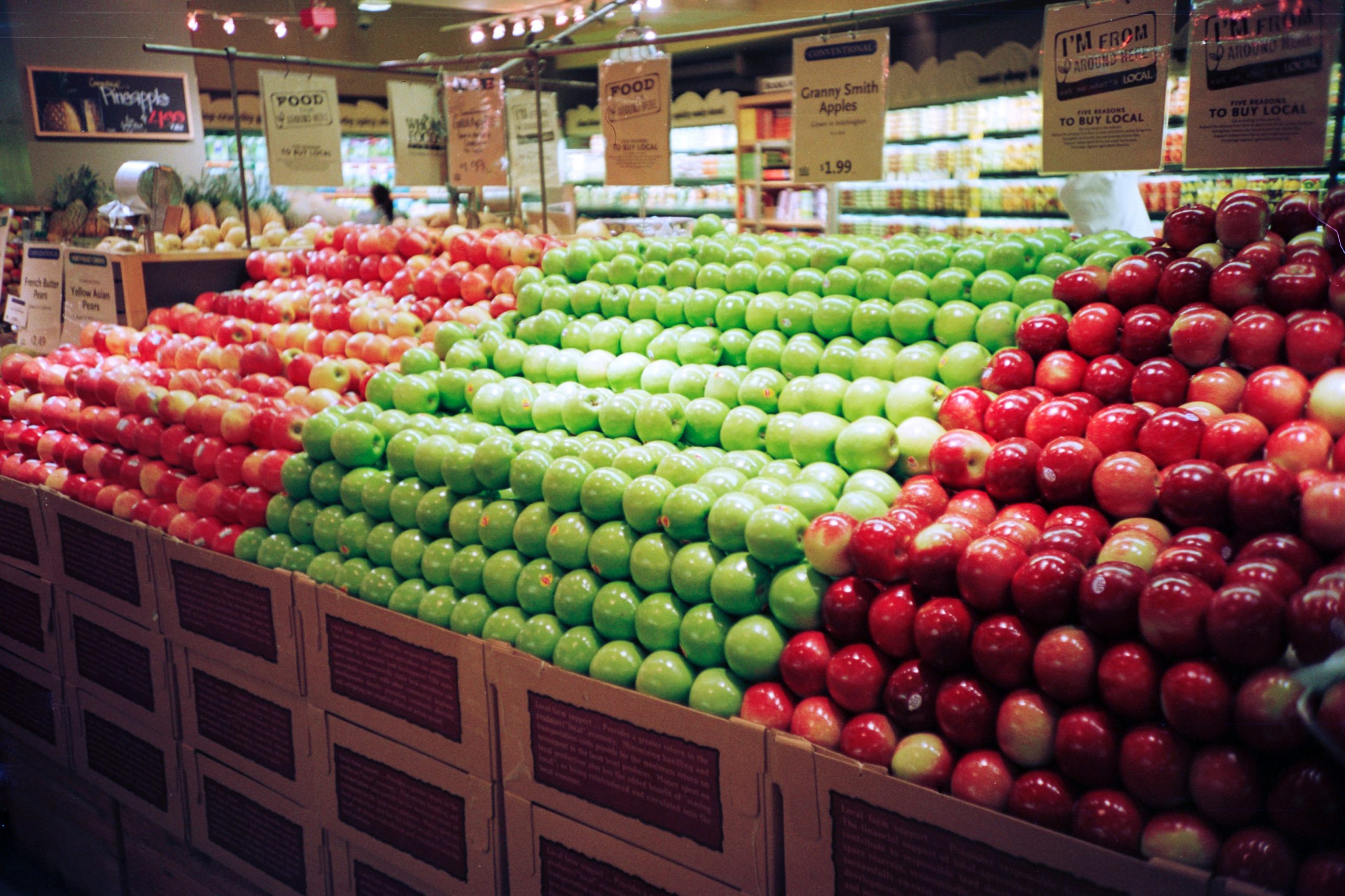I can spend hours in a grocery store. I get so excited when I see food, I go crazy. I spend hours arranging my baskets so that everything fits in and nothing gets squashed. I’m really anal about it, actually.
I like to think that if Cameron worked at FreeAgent then she would feel the same about data (Cameron – please feel free to look at our current vacancies). At FreeAgent a lot of our data is queried and analysed using Looker, and I believe that there are similarities between a successful supermarket and a successful Looker implementation …
Carry varied stock
A good supermarket stocks a wide range of ingredients, which enables its customers to cook a wide range of meals. Similarly, we need to ensure that Looker has a wide range of data, in order to answer a wide range of questions. This often means combining data from various sources. For instance, by combining support ticket information with the number of article views on our knowledge base, we can better understand how to improve the information available to our users.
Keep fruit and vegetables fresh
The fruit and vegetables on display in a supermarket are seldom out-of-date. Supermarkets (presumably) manage this by a) carefully managing stock levels, and b) throwing out any expired food. We ensure that our Looker content remains “in date” by doing something similar to b) – we delete any unused looks and dashboards via our fully automated Looker Content Cleaner (LCC). Think of the LCC as supermarket staff methodically working to check each piece of fruit every day, then removing anything that looks rotten so that everything is fresh and tasty!
Store everything in its place
Supermarkets are structured to encourage you to spend as much money as possible (see: sweets displayed by the tills), but this organisation is also there to make it easier for customers to find things. So, the “cleaning” aisle will have sprays, detergents, bin bags, rubber gloves, and so on – all side-by-side. We try and replicate these “structured aisles of related produce” in Looker, by having many models (the “aisles”) which contain one or more explores of related content (the “related produce”). For instance, our A/B Testing model contains the explores which show the results of our A/B Tests. This means that any user who wants to understand how our tests are performing only needs to head to that “aisle” and take a look. Simple!
Cater for all (but encourage people to cook)
Not everyone enjoys cooking, and most supermarkets sell both “ready meals” and base ingredients. In Looker, you might think of pre-built reports as ready meals – someone “cooked” this dashboard so I don’t have to! However, I believe that not learning to explore the data is a bit like only eating pre-packaged sandwiches – it’ll keep you alive, but you’ll benefit from (and enjoy!) learning to cook and exploring new flavours. That’s why we run a Looker onboarding training course on a regular basis – we want to teach our staff the skills they need to “cook up” their own insights. This also makes Looker feel like their local supermarket – they know what’s on each aisle, and can quickly “find the milk” when they’re in a hurry.
Offer the convenience of delivery
Some people like visiting the supermarket, and strolling around the aisles to see what takes their fancy. Others prefer to have their grocery shop delivered straight to their door. At FreeAgent, we use many different mechanisms for data delivery. We send data from Looker to S3, we schedule dashboards to land in email inboxes each morning at 9am sharp. But my personal favourite is our use of Looker’s Slack integration, which we use to send analyses and dashboards from Looker directly into the conversations happening in Slack.
Hire great staff
Supermarkets have staff on hand stocking shelves, which can be handy for helping people locate the item on their shopping list which they are struggling to find. The Analytics team members perform comparable tasks. They stock the shelves (manage our ETL process), source new produce (new data being asked for) and help our customers find what they’re looking for (answer questions in our Slack requests channel).
So, whether you’re designing or maintaining your Looker setup, maybe consider some of the things discussed above. Do you have the range of data necessary to build insights? Is your data “fresh”? Are you catering for all of your users? Can your users easily find what they need? Are staff on hand to help? By asking these questions, you should find that you are able to serve your users more efficiently and comprehensively. And don’t worry if that’s a lot to think about, do it one thing at a time – every little helps!


